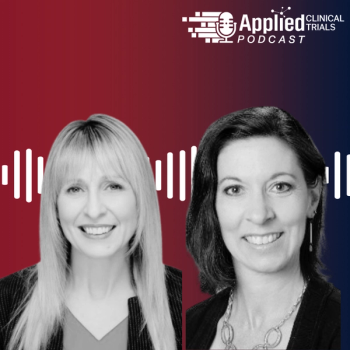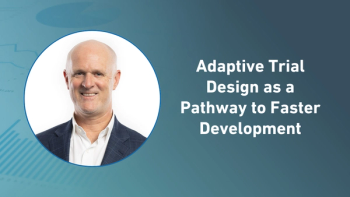
- Applied Clinical Trials-05-01-2021
- Volume 30
- Issue 5
Protecting Patients in COVID-19 Vaccine Clinical Trials
Michele Russell-Einhorn, Chief Compliance Officer at Advarra discusses safety, speed, and ethics in COVID-19 vaccine trials.
Pfizer, Moderna and Johnson & Johnson have started to expand COVID-19 vaccine clinical trials to include pregnant women and children under 12 years old, and soon Pfizer will begin trials on children two to five years of age. With scientists reporting the pandemic may never be fully controlled until children are vaccinated, the questions of ethics, safety and speed turns to that patient cohort. To get more insights, Applied Clinical Trials spoke with Michele Russell-Einhorn, Chief Compliance Officer at Advarra, a provider of integrated regulatory review solutions, as well as research quality and compliance consulting services and clinical site technologies.
Applied Clinical Trials: Advarra’s IRB and IBC supported 100% of Operation Warp Speed (OWS) vaccine trials. Can you explain Advarra’s role?
Michele Russell-Einhorn: Advarra has been honored to have played its role in overseeing research to find ways to prevent, treat and diagnose COVID-19. We have as our largest service, the IRB review service, but also has the institutional biosafety service (IBC), which precedes the IRB review. For the research studies that are part of Operation Warp Speed, we’ve either done the IBC review for that research, or the IRB review for the research or both. In the case of Moderna, we did the institutional biosafety review, and we did the IRB review.
ACT: Was there anything different about reviewing protocols for the OWS initiative than any another trial?
Russell-Einhorn: It really wasn’t what was different about this from another trial, as much as what’s been different about research in the pandemic, as a whole. We have been overseeing 700-plus main protocols in COVID-19. And with every one of them, there’s a sense of urgency. And notwithstanding the urgency, there’s also a need to maintain quality and expertise.
The companies have been working very hard to get these agents out to the public. It’s a miracle that in March last year, the country was starting to shut down and here we are, a year later, and we have four vaccinations. Operation Warp Speed was really the catalyst to place all of the pandemic research into this more urgent category.
The other issue is that we are used to drug and device development taking a long time, and this took 11 months. But it doesn’t mean there’s anything wrong with it, and notwithstanding the issues with AstraZeneca and J&J, every once in a while, there’s a commercially available drug that gets recalled by FDA. And the fact is that an FDA approved drug may have gone through eight years of drug development and a 300,000-person Phase III trial, but everything has some risk, and we need to balance the risks.
This is an opportunity to look at how did we do this in 11 months. And what can we learn from this and take going forward for all
other research.
ACT: How was the company able to process the amount of documentation required to protect patients in those trials?
Russell-Einhorn: Advarra has many years of experience in the area of multi-site research and has been overseeing research with upwards of 300 sites. In order to do that, we have always needed to have a system in place that incorporates all the people—the board members, IRB members, operations staff, and others—who can receive and review the documentation and ensure that it’s communicated and acted upon.
We’ve always been able to take a main protocol, manage hundreds of sites, the unique informed consent forms from these sites, the many amendments that come in that then have to be acted on and communicated back to this individual sites, the unanticipated problems.
When the pandemic hit, Advarra was already 60% remote, so it didn’t affect our workforce. We knew what needed to make the rest of the company remote-based. Our system itself was already set up to receive urgent submissions and unique informed consents and to immediately manage a main COVID-19 protocol that involve, for example, 200 sites. We have always been efficient in our reviews, with comparisons between academic institutions and an independent IRBs, so we had to become even more efficient at the same time that we maintained quality.
ACT: Pediatric participation in clinical trials is necessary, but also concerning for parents and guardians. How has industry helped them feel more assured
to participate?
Russell-Einhorn: One issue that came up at the beginning of the pandemic was can the IRB regulations manage COVID-19? But it’s really no different than when gene therapy or CAR-T came along. The answer is that for IRB’s, the 111 criteria is really quite good
From the perspective of the IRB, the requirements for data safety monitoring as appropriate for as sent by minors, for permission from parents, is already there to apply to COVID-19 research. But one thing about the pandemic was situations of children on ventilators, which is very sad, very difficult. You might have a research protocol, where you decided that assent was required from minors. But the IRB hadn’t considered waiving that assent in regard to ventilators. As the pandemic evolved, and we saw how serious it could be, we realized that we had to ask extra questions. An IRB can always go back and review something as necessary. And sponsors can come always come in and modify protocols. But how this impacted some minors could be heartbreaking at times.
ACT: What would be cause for concern by an IRB if included in an Informed Consent Form for children?
Russell-Einhorn: This actually raises issues that apply to both a pediatric population and an adult population. But in regard to COVID-19 and research involving children, there are certain medical conditions like asthma and obesity, that make individuals more vulnerable, more susceptible to severe illness. If you had a research protocol seeking to enroll minors, and it required them to give up standard of care therapy in order to participate and they had asthma, that would be cause for concern by the IRB. An IRB might say that the risk of giving up the standard of care option is not reasonable in terms of the benefit the individual might get from participating in the research.
The other issue is mandatory biopsies, in either the pediatric or adult population. Research often includes a requirement for a mandatory biopsy, which is different from what I would call an extra blood draw, or an extra bone marrow, where the procedure is already happening but requiring more of it at the same time. But a mandatory biopsy is a different activity. It’s separate from a procedure the participant is already being asked to go through. That mandatory biopsy could be minimal risk if it’s, for example, a skin biopsy. But it could be very serious if it’s a liver or lung biopsy. And when you’re dealing with investigational agents under FDA oversight, there are frequently protocols that include mandatory biopsies because they want to see how the drug is working, how it’s manifesting itself in tissue. So it’s not an unreasonable request, but it has to be carefully evaluated.
There has been a lot of discussion around the issue of mandatory biopsies. The Secretary’s Advisory Committee on Human Research Protections (SACHRP), discussed it in their annual meeting and ASCO had an article about it. It’s become a bit of a
hot topic.
ACT: What other trends are on the table for ethical pediatric research?
Russell-Einhorn: We’ve drawn lines to review this research for adults vs. pediatrics for numerous years. And we need to ask whether we should be drawing those lines as sharply as we have been. Since we do make a distinction between a minor and an adult, and a 17-year-old is considered a minor. But most 17-year-olds wouldn’t consider themselves minors and 17-year-olds who are in college wouldn’t consider themselves not capable of giving consent. Maybe it’s time for us to rethink the definitions of a minor and whether they actually remain useful, given the state of research
right now.
Articles in this issue
over 4 years ago
Rise of the Activated Patient During COVID—Biopharma on Noticeover 4 years ago
Aligning Medical Monitoring and Data Scienceover 4 years ago
Utilizing DHTs for Clinical Trial Endpointsover 4 years ago
Why Centralized Monitoring and RBQM are Here to Stayover 4 years ago
Navigating New Changes During the Pandemicover 4 years ago
Maximizing the Value of Remote Monitoringover 4 years ago
Clinical Trials Day Every May, or Every Day?over 4 years ago
Applied Clinical Trials May 2021 Issue (PDF)over 4 years ago
New Structures to Tackle New Challenges in European Healthcareover 4 years ago
Biden Seeks Added Funding for Medical Research, Disease TrackingNewsletter
Stay current in clinical research with Applied Clinical Trials, providing expert insights, regulatory updates, and practical strategies for successful clinical trial design and execution.






.png)



.png)



.png)
.png)
